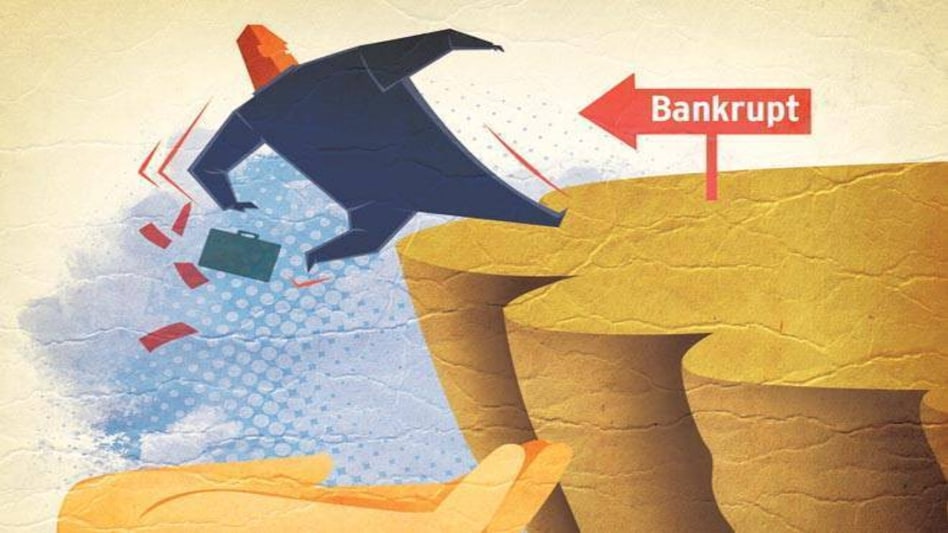

As we enter 2018, it is clear that we are not anywhere near solving the vexed non-performing asset (NPA) problem that has plagued the Indian banking system for years now. At last count, the total gross NPA in the Indian banking system totaled up to around Rs 9 lakh crore. And while the rate of growth in NPAs is showing signs of slowing down, the overall problem is still far from any sort of quick resolution.
As I had written in an earlier column, the Insolvency and Bankruptcy Code (IBC) is a good solution to end the problem of companies that are piling up losses and running up a debt that they cannot service, but it is not a great tool for banks to recover the money they have lent out.
The reason for that is simple enough. Only a few companies that have been referred to the National Company Law Tribunal (NCLT) under the IBC have assets that attract buyers. But the bids that potential buyers are making for these bankrupt companies are fairly low, and the bids envisage banks taking a huge haircut - anywhere between 60 and 90 per cent. The bidders are hoping to pick up good assets at bargain basement prices.
Worse, only a few of the 400 plus cases under resolution at the NCLT under the IBC are likely to find bidders. Most are headed straight for insolvency - in which case, the assets might fetch meager amounts, if anything at all. For most small and medium companies that are undergoing resolution, there is simply no interest from buyers.
Where does that leave banks? If they are lucky, they will get a fraction of the principal amounts they loaned back. If they are unlucky, they will get practically nothing.
The realization that the IBC process does not work in their favour has also forced most banks to look for other options. Indeed, reports suggest that many of them are pleading with the Reserve Bank of India (RBI) to allow them to find other solutions instead of forcing them to refer companies to the NCLT for the next lot of 28 defaulting companies after the first 12 that are already undergoing resolution. In some cases, the lead banker is pushing to get some companies out of the NPA list altogether. A recent report in The Economic Times suggests that SBI is talking to other bankers to get JSPL out of its NPA classification.
The IBC has had one salutary effect, after the amendment practically barring all defaulting promoters from participating in the resolution process was passed. It has forced many borrowers to desperately seek solutions that will allow them to pay banks at least some money and stop being classified as NPAs. Bankers themselves are keen to give them some leeway to avoid having to refer them to the NCLT.
How did the NPA problem become so big? There are many reasons and no one reason can be attributed as the biggest problem. In some cases, it was just a case of bad promoters taking too much debt and even siphoning off money instead of trying to run a tight ship. They were in turn abetted by lax bankers who did not do much due diligence and also politicians who helped them get loans. In other cases, there were genuine reasons like telecom or mining licenses being cancelled after much money had already been sunk. In still other cases, it was the shortage of gas supplies from the KG basin, on which the project depended on, or dumping by Chinese in some goods. And then there were cases of overambition where the promoters bought and expanded indiscriminately without having the management depth or the resources to run the companies properly.
But in my opinion, the biggest reason for the NPA problem was that the banks got swayed by big project plans of businessmen and simply did not take enough precautions or enough due diligence.
What is the way forward then? I think the banks need to take a hard look at the skewed debt to equity ratio of the past few years, and give out loans only if the promoter brings in enough matching equity. Too many projects have got into trouble by having relatively low equity and a huge debt burden. In other words, the promoters have taken less risk while the bankers have taken more. It should actually be the opposite.
The only good news about the NPA issue is that the RBI has become far more stringent in forcing banks to recognize bad loans since 2015 through asset quality review (AQR) process. But the NPA problem will continue to haunt the banking sector and industry for much of 2018.
Copyright©2025 Living Media India Limited. For reprint rights: Syndications Today